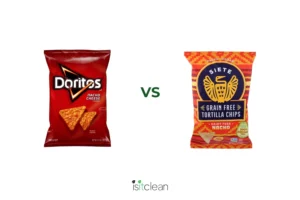
Acesulfame potassium is a zero-calorie sweetener that is added to many sugar-free…



Sodium bisulfite, a salt derived from sulfurous acid, is commonly used as a preservative and antioxidant. Its production involves the reaction of sodium hydroxide (NaOH) with sulfur dioxide (SO2). Sodium bisulfite is an antimicrobial agent, preventing spoilage and oxidation in food products. It is particularly used in the preservation of fruits, vegetables, and beverages such as wine

Sodium bisulfite has demonstrated a lack of toxicity in animals in some studies, while other studies suggest that it may trigger intestinal inflammation. It appears to be able to damage human lymphocytes, likely due to the genotoxic nature of sulfur dioxide, and may also inhibit the growth of beneficial gut bacteria at concentrations considered safe. Human research is lacking. Due to many reported adverse reactions such as anaphylactic and asthmatic reactions with increased use of sulphites in the 1970’s and ‘80’s, the FDA banned the use of sulphites in fresh fruits and vegetables.
Health is like a bank account, certain ingredients make a deposit into your health bank, meaning they add to
your health. Certain ingredients withdraw from your health bank. We want health promoting ingredients in our diet. To keep things simple, we rate ingredients on a green, yellow, red scale:

It is naturally occurring in food and has no harmful effects on the body. It is real food. It is health promoting.

It goes into one or more of the below categories

It is known to have a harmful effect on the body (ex. All food colorings, Natural Flavors, MSG, Potassium bromate, aspartame, artificial flavors)



The Food Showdown: Popcorners flavors
Ingredient Rating: Canola oil – is it bad for you?
Clean Consuming: Nourishment for your

We have accomplished so much in just 1 year since our launch in March of 2023! We now have 10,000

The Nacho Chip Food Showdown, is Tapioca Starch safe in food? and a must-see documentary on America’s food system.
Stay in the know with the latest ratings, articles, and our newsletter, The Dirt.